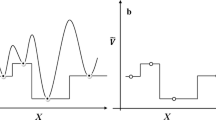Abstract
Structures, binding energies, harmonic frequencies, dipole moments, HOMO–LUMO energy gaps and particularly atoms in molecules (AIM) analyses of some nanoannular carbon clusters (C4–C20) are investigated at B3LYP/6-31+G(d) level of theory. No correlation is found by plotting the calculated binding energies as a functional number of carbon atoms of carbon clusters. The calculated binding energies sharply increase from C4 to C10 while slowly from C10 to C20. The binding energies of C4n+2 clusters including C6, C10, C14, and C18 have a clear increase when compared with others indicating their aromatic characters which is confirmed by results of HOMO–LUMO energy gaps and geometrical parameters. AIM analyses show that most of our carbon clusters are topologically normal (non-conflict) with stable structures. Nevertheless, the topological networks of small antiaromatic rings, C4 and C8, at their equilibrium geometries may change via molecular vibrations. The existence of straight bond paths in 3D molecular graphs of carbon clusters with n > 10 implies that ring strains are decreased as the ring sizes grow. Except for C4 and C8, the ellipticity values for the remaining carbon clusters are small indicating that the C–C bond is conserved in these clusters. Dipole moments of even-numbered structures are negligible, whereas odd-numbered ones have μ values of 0.09−0.73 D.


Similar content being viewed by others
References
Cermak I, Monninger G, Kratschmer W (1997) Advances in molecular structure research, vol 3. JAI, Greenwich, p 117
Hinkle KH, Keady JJ, Bernath PF (1988) Science 241:1319. doi:10.1126/science.241.4871.1319
Kroto HW (1998) Nature 331:328. doi:10.1038/331328a0
Wakabayashi T, Achiba Y (1992) Chem Phys Lett 190:465. doi:10.1016/0009-2614(92)85174-9
Weltner W Jr, Van Zee RJ (1989) Chem Rev 89:1713. doi:10.1021/cr00098a005
Van Orden A, Saykally RJ (1998) Chem Rev 98:2313. doi:10.1021/cr970086n
Hwang HJ, Van Orden A, Tanaka K, Kuo EW, Heath JR, Saykally RJ (1993) Mol Phys 79:769. doi:10.1080/00268979300101611
Giesen TF, Van Orden A, Hwang HJ, Fellers RS, Provencal RA, Saykally RJ (1994) Science 265:756. doi:10.1126/science.11539187
Ray AKJ (1987) Phys B At Mol Phys 20:5233. doi:10.1088/0022-3700/20/19/031
Hutter J, Lüthi HP, Diederich FJ (1994) Am Chem Soc 116:750. doi:10.1021/ja00081a041
Martin JML, Taylor PRJ (1996) Phys Chem 100:6047. doi:10.1021/jp952471r
Martin JML, El-Yazal J, Francüois JP (1995) Chem Phys Lett 242:570. doi:10.1016/0009-2614(95)00801-A
Xu Shu-hong, Zhang M, Zhao Y, Chen B, Zhang J, Sun C (2006) Chem Phys Lett 421:444. doi:10.1016/j.cplett.2006.01.038
Arulmozhirajaa S, Ohno TJ (2008) Chem Phys 128:114301
Bader RFW (1990) Atoms in molecules—a quantum theory. Oxford University Press, New York
Bader RFWJ (1998) Phys Chem A 102:7314. doi:10.1021/jp981794v
Popelier PLA (2000) Atoms in molecules. Prentice Hall, (UMIST), Englewood Cliffs
Biegler-König FJ (2000) Comput Chem 21:1040. doi:10.1002/1096-987X(200009)21:12<1040::AID-JCC2>3.0.CO;2-8
“MORPHY99”, a topological analyses program written by P.L.A. Popelier with contribution from R.G.A. Bone, UMIST, Engl, EU
Popelier PLA (1996) Comput Phys Commun 93:212. doi:10.1016/0010-4655(95)00113-1
Jalbout AF, Fernandez SJ (2002) Mol Struct 584:169
Giesen TF, Berndt U, Yamada KMT, Fuchs G, Schieder R, Winnewisser G, Provencal RA, Keutsch FN, Orden AV, Saykally R (2001) Chem Phys Chem 2:242. doi:10.1002/1439-7641(20010417)2:4<242::AID-CPHC242>3.0.CO;2-#
Acknowledgments
We wish to thank Abdolreza Sadjadi, Abdi, (Islamic Azad University of Kazeroon) for many stimulating and helpful discussions as well as technical supports.
Author information
Authors and Affiliations
Corresponding author
Rights and permissions
About this article
Cite this article
Kassaee, M.Z., Musavi, S.M., Akhavan, A. et al. Structures and bonding patterns of nanoannular carbon clusters (C4–C20) through AIM analyses. Struct Chem 20, 839–846 (2009). https://doi.org/10.1007/s11224-009-9478-0
Received:
Accepted:
Published:
Issue Date:
DOI: https://doi.org/10.1007/s11224-009-9478-0




